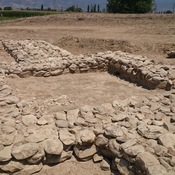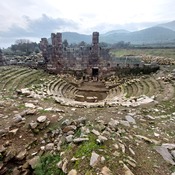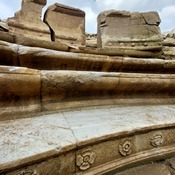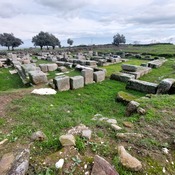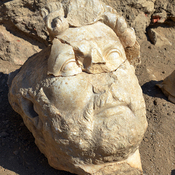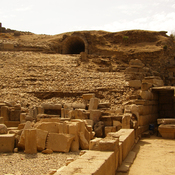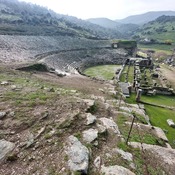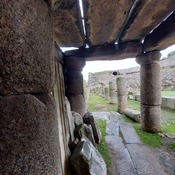The battle of the Marsyas in 497 BC was the first of three battles between the Persians and Carian rebels during the Ionian Revolt (499-493 BC) - wars between the Greeks and the Persian Empire.
Herodotus : It so happened that news of this was brought to the Carians before Daurises' coming, and when the Carians heard, they mustered at the place called the White Pillars by the river Marsyas which flows from the region of Idria and issues into the Maeander. When they had gathered together, many plans were laid before them, the best of which, in my judgment, was that of Pixodarus of Cindya, the son of Mausolus and husband of the daughter of Syennesis, king of Cilicia. He proposed that the Carians should cross the Maeander and fight with the river at their back, so that being unable to flee and compelled to stand their ground they might prove themselves even braver than nature made them. This opinion, however, did not prevail, and it was decided instead that the Persians and not the Cilicians should have the Maeander at their back, the intent being that if the Persians were overcome in the battle and put to flight, they would not escape but be hurled into the river.Presently, when the Persians had come and had crossed the Maeander, they and the Carians joined battle by the river Marsyas. The Carians fought obstinately and for a long time, but at the last they were overcome by the odds. Of the Persians, as many as two thousand men fell, and of the Carians ten thousand1.
Sources:
- Herodotus, The Histories V.118-119, A. D. Godley. Cambridge. Harvard University Press. 1920.
- M. Mellink in: The Cambridge Ancient History, Volume X: The Fifth Century BC, 1982, p. 224
- Rickard, J (13 April 2015), Battle of the River Maeander, 497 BC , http://www.historyofwar.org/articles/battles_maeander_497.html
References
- ↑ Herodotus, The Histories, V. 118-119 - http://www.perseus.tufts.edu/hopper/text?doc=Perseus%3Atext%3A1999.01.0126%3Abook%3D5%3Achapter%3D118%3Asection%3D3

